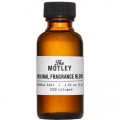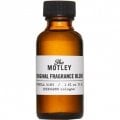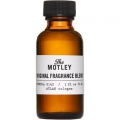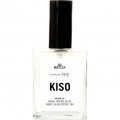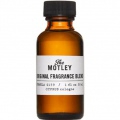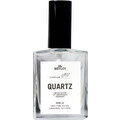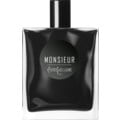10/13/2020

Chizza
274 Reviews
Translated
Show original

Chizza
Top Review
20
Uncommented colonia instead of corona scents
The Motley is a US-American perfume brand which was little known to me before I received a letter. All six fragrances so far are described as cologne and - this much I'll say in advance - in terms of shelf life and sillage this is true. Since the present fragrance is quite linear, I would like to talk a bit about the Palo Santo itself and then move on to the fragrance. According to the Cologne-Eminence here, FvSpee, this would certainly be a brown Cologne.
Palo Santo is a tree that grows in South and Central America. It belongs to the same genus as myrrh or even olibanum, which makes sense because its resin is spicy and warm. Obviously it is also supposed to have a healing effect, at least the oil, since it is supposed to have a relaxing effect analogous to basically similar essences originating from the tree like mountain pine. How do I make the transition to Beaufort now? Oh yes, their product Lignum Vitae refers to this wood by name, because that is the Latin name. Whew, there we go again.
Let's get to the scent: Palo Santo starts very spicy, at the beginning it even reminds me for a second of spicy fish. At first, a woody, slightly sweetish and musty smell comes to mind. No wonder, Palo Santo belongs to the genus of guaiac woods, which are known for this sweetish touch. Nevertheless, the smell is different here. Normally I don't appreciate guaiac, here I am fascinated by the olfactory structure.
The further we go the more the wood changes into a dry, brittle wood with the typical scent characteristics. It remains aromatic but generally mild. Only now and then does the bitter brown core break through and remind us of the other powerful notes Palo Santo can offer. It then remains essentially the same
Palo Santo gradually weakens and fades after a few hours, leaving behind a touch of woody, spicy shaving foam on the skin that wants to linger. Very pleasant and somehow unpredictable. Great finish, if there wasn't the H/S. This is very modest because the period of time is four, benevolently five hours. That is too little for the equivalent of 200 Euro per 100 ml. In this respect I had a nice trip, maybe I have to study other brown colognes carefully, because the trip to the South American tree landscape was nice.
Palo Santo is a tree that grows in South and Central America. It belongs to the same genus as myrrh or even olibanum, which makes sense because its resin is spicy and warm. Obviously it is also supposed to have a healing effect, at least the oil, since it is supposed to have a relaxing effect analogous to basically similar essences originating from the tree like mountain pine. How do I make the transition to Beaufort now? Oh yes, their product Lignum Vitae refers to this wood by name, because that is the Latin name. Whew, there we go again.
Let's get to the scent: Palo Santo starts very spicy, at the beginning it even reminds me for a second of spicy fish. At first, a woody, slightly sweetish and musty smell comes to mind. No wonder, Palo Santo belongs to the genus of guaiac woods, which are known for this sweetish touch. Nevertheless, the smell is different here. Normally I don't appreciate guaiac, here I am fascinated by the olfactory structure.
The further we go the more the wood changes into a dry, brittle wood with the typical scent characteristics. It remains aromatic but generally mild. Only now and then does the bitter brown core break through and remind us of the other powerful notes Palo Santo can offer. It then remains essentially the same
Palo Santo gradually weakens and fades after a few hours, leaving behind a touch of woody, spicy shaving foam on the skin that wants to linger. Very pleasant and somehow unpredictable. Great finish, if there wasn't the H/S. This is very modest because the period of time is four, benevolently five hours. That is too little for the equivalent of 200 Euro per 100 ml. In this respect I had a nice trip, maybe I have to study other brown colognes carefully, because the trip to the South American tree landscape was nice.
16 Comments








